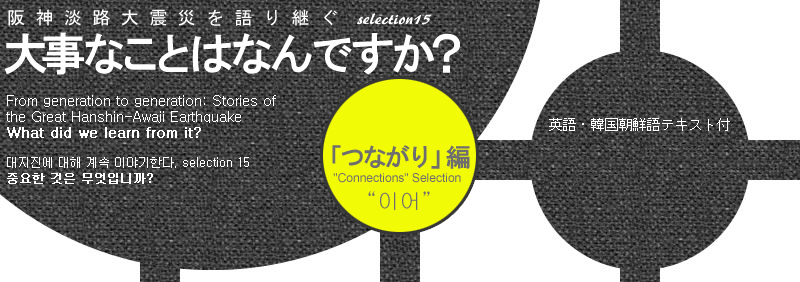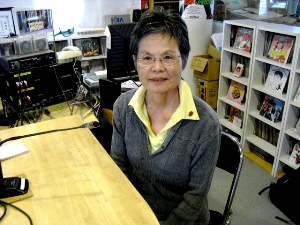Using the experience of being a coordinator for evacuation shelters and temporary housing for victims of the Hanshin-Awaji earthquake disaster
Naoko ISHITO – Urban Planner
■Born and bred in Nagata
My work as an urban planner changed with the times involving me in new town development and redevelopment projects as well as housing and living problems for elderly people.
When the Hanshin-Awaji earthquake happened I was living in Osaka. My mother was living in Kobe and I intended to get there as quickly as possible, but I could only get as far as Nishinomiya-kitaguchi.
■At Nishinomiya City Office
A week after the earthquake, I helped distribute application forms for temporary housing for disaster victims. Many of the people who came to get application forms were very old people or old people living alone. One thing that is stuck in my mind is one person saying, “Even if I do get temporary housing, I’ll have to leave my neighborhood, and I don’t think I can take that.”
■Buildings built by strong, vigorous men
During the post-war economic boom period the viewpoints of the vulnerable and weak or those of ordinary living were not taken into consideration. In those days, the workplace was a male society. Everyday things were left to the housewife. This was the image created by strong and vigorous men. When I, as a woman, said ‘I think this isn’t convenient’, I was made a fool of and told, “What do housewives know, they are not professionals.”
■Because there were neighbors, because of the environment in the neighborhood
There are neighbors who have lived next-door for decades, and if the window wasn’t opened by lunchtime, they would open it and enquire if anything was wrong. And if you went shopping, the shopkeeper would chat with you. It was this kind of environment that enabled elderly people to live alone. We are able to live safely through our casual human relationships, the kindness of others, their thoughtful eye and their consideration.
■Increasing number of dying alone without anyone noticing it
After getting used to temporary housing and making friends there, people were forced to move to public housing for disaster victims causing them to start all over again in trying to get by living alone. On top of this, the doors of this public housing were made of steel and once they were closed, the residents were cut off from the outside world. In temporary housing, over a period of 4 years, about 250 people died alone without anyone noticing it.
■Housing where people can mix
In the autumn of the year of the earthquake disaster, I set up the volunteer ‘collective housing project promotion support group’. In a collective house, each resident provides 10% of their property for the creation of a communal living room and slightly larger kitchen.
■Livelihood support team
When the Tohoku earthquake happened on March 11, I wanted to go there as soon as possible, but the people around me prevented me from going. The reason for this being that I had an operation in 2004 and had not fully recovered my physical strength. I was upset because I wanted to go, but couldn’t.
A few days after the earthquake, I heard that some victims of the earthquake had evacuated to the Kansai area, so I set up a livelihood support team in Kobe. Grief-care for those who had evacuated would need to be continued over a long period of time. I asked some of my acquaintances who were going to the disaster-hit area during the long holiday in May to bring some pamphlets about the livelihood support team with them.
■Please tell us how to support people living in temporary housing
A chief director of a livelihood improvement center suddenly telephoned me saying he had no experience and asked me if I could go there to give a talk.
■Cultural difference
The Tohoku and Kansai cultures are completely different. In Tohoku, the Tohoku culture is taken in to consideration while giving support. When I began my talk, I said, “I know only the Kansai culture. My talk will be about Kansai. So, please remember only that which suits you.”
■Life as an evacuee and in temporary housing in Tohoku
Using the Hanshin-Awaji earthquake disaster as a lesson, many temporary housing units did not break up existing communities, because people from villages as a whole or as a community as a whole were moved into them. In some areas, to prevent residents in temporary housing being mostly elderly people from remote villages, steps were taken to ensure that the ratio of weak and vulnerable groups would not be more than one-third of the total number.
■My mission is to educate the younger generation
Many people who were active in volunteer work, etc, during and after the Hanshin-Awaji earthquake disaster were and are in their 50s ~70s. Few young people have been educated or shown what to do. To correct this failing, people in their 30s and college students have been included in the livelihood support team. I feel it is my responsibility to bring up young people who will be involved in these activities. These young people also come to disaster-hit areas with me.

